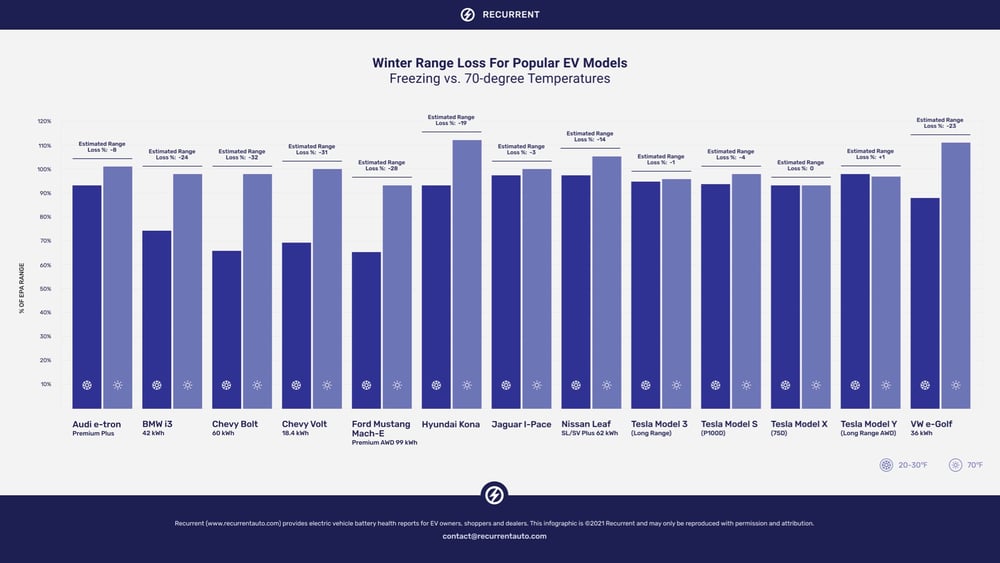We talked about this on the air last Saturday after an ice and snowstorm hit the Dallas-Fort Worth area. Cold weather is not good for car batteries, and is really not good for electric vehicles.
Why Cold Temps Impact EV Batteries
There are two main reasons cold temperatures can adversely impact how well electric vehicle lithium-ion batteries function. First, cold temps slow down the chemical and physical processes that make the batteries work. But the biggest issue is cabin heaters. HVAC systems in electric vehicles are typically powered by the battery, not extra engine heat as with ICE vehicles. Recurrent, a provider of EV battery reports, offers a great explanation on its post The Truth About Winter Range Loss.
The end result is a loss in range that can be significant when it's cold. According to stats from the U.S. Department of Energy, when it's 20°F, EV range can drop by 41% from compared to when its 75°F. DOE researchers say about two-thirds of the extra energy consumed is used to heat the cabin. When it's not used, EV driving range only drops 12%. Those numbers align with a 2019 AAA study. In its research, when temps dipped to 20°F and the HVAC system is used to heat the inside of the vehicle, the average driving range dropped by 41 percent. AAA calculated that for every 100 miles of combined urban/highway driving, the range at 20°F would be reduced to 59 miles.
Real-World Data
While AAA's study was in a simulated lab setting, new data published by Recurrent is taken from real-world driving conditions based on 7,000 vehicles in Recurrent's U.S. community. The chart below, used with permission, shows the winter range for a number of popular EV models. As you'll see, it varies widely. You can find specific details on each model in Recurrent's full report here.
Charge To Cost
Something else to keep in mind is the cost to charge factor. When it's cold out you'll need to plan for more charging time (which means knowing where public charging locations are along your route.) In turn, that increases the cost to operate the vehicle. For instance, AAA’s study found that the use of heat when it’s 20°F outside adds almost $25 more for every 1,000 miles when compared to the cost of combined urban and highway driving at 75°F.
Improving Range in Cold Weather
Cold weather range concerns shouldn't deter you from considering an electric vehicle. You'll just need to do a bit more planning if you live in an area prone to colder temps. There are a number of ways you can do that and also improve range in cold weather. Some tips include:
- If you drive a plug-in hybrid or electric vehicle, using the seat warmers instead of the cabin heater can save energy and extend range. (DOE)
- Make time to “pre-heat” or cool down the inside of the vehicle while still connected to the charger. This will reduce the demand on the vehicle’s battery to regulate cabin temperature at the onset of driving. (AAA)
- If you drive a plug-in hybrid or electric vehicle, preheating the cabin while plugged into the charger can extend your vehicle's range. (DOE)
- Plan ahead. When drivers are aware of the weather conditions before heading out, they can plan for more frequent stops for charging as well as identify the location of charging stations. (AAA)
- Park your car in a warmer place, such as your garage, to increase the initial temperature of your engine and cabin. (DOE)
Photo credit: AS photostudio/Shutterstock.com.


.jpg?width=150&name=jerry-headshot.jpg%20(1).jpg)